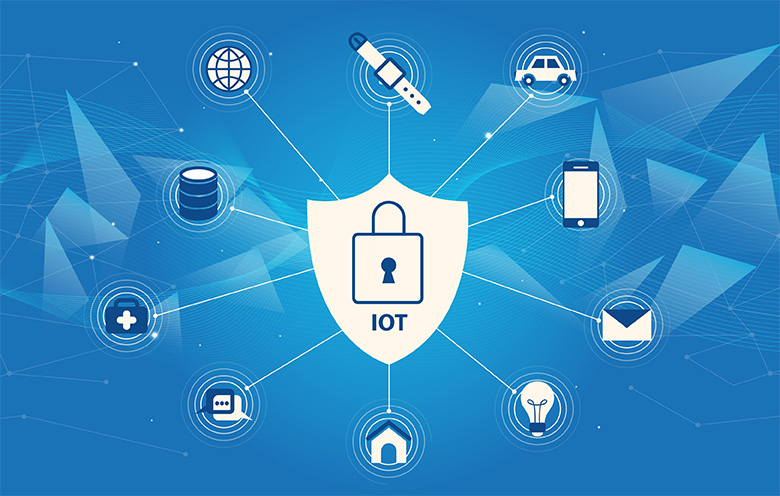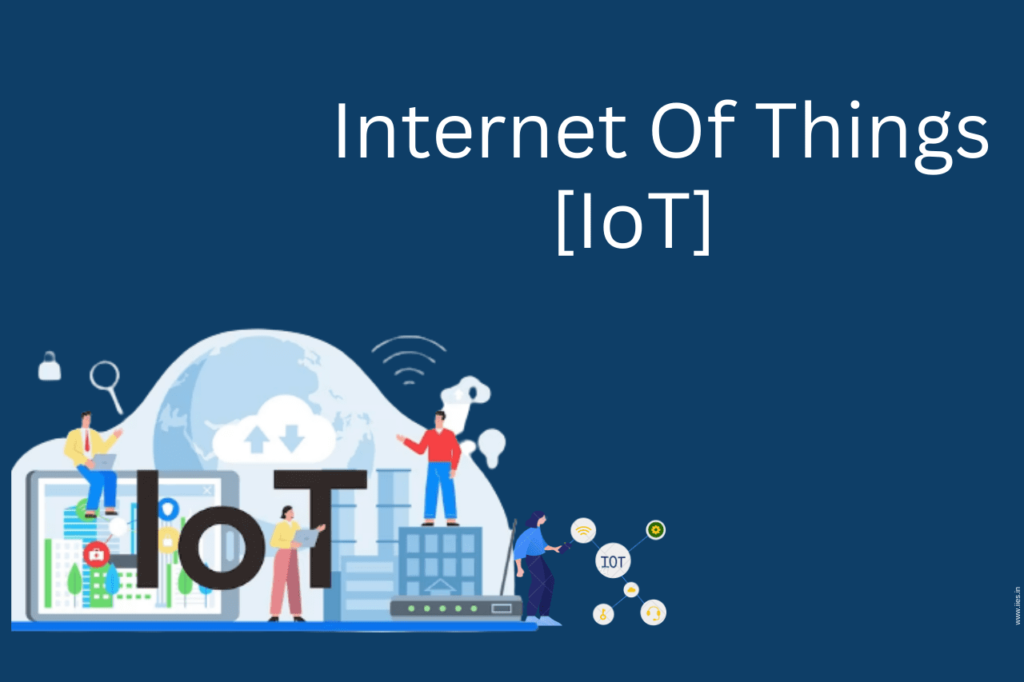Imagine waking up to a world gone haywire. Your morning coffee maker decides to dispense dish soap instead of brew. Your smart thermostat cranks the heat to an unbearable level while your locks mysteriously trip, trapping you inside. This isn't a scene from a sci-fi thriller, but a potential consequence of the looming threat - The Great IoT Crash.
The Internet of Things (IoT) has undeniably revolutionized our lives. From refrigerators that reorder groceries to thermostats we can control from our phones, these interconnected devices promise convenience and efficiency. But what if this very convenience turned into a colossal security nightmare?

Experts warn of a potential large-scale security exploit targeting vulnerabilities in these everyday devices. Imagine millions of compromised devices, turning homes into battlegrounds and critical infrastructure grinding to a halt. Hackers could steal sensitive data, disrupt essential services like power grids and transportation systems, or even cause physical harm by manipulating smart devices in homes and hospitals.
The scary part? This isn't entirely fictional. Security weaknesses have already been discovered in various IoT devices, from baby monitors to medical implants. The lack of standardized security protocols and lax patching practices by manufacturers make these devices easy targets for malicious actors.
A major IoT crash could have devastating consequences. Beyond the economic damage, the erosion of trust could cripple the future of IoT adoption. Governments and regulatory bodies would likely scramble to impose stricter regulations and mandatory security standards.
But there's still hope. The road to recovery lies in fortifying IoT security from the ground up. Manufacturers need to prioritize secure coding practices and regular software updates for their devices. Security researchers and government agencies must collaborate to identify and address vulnerabilities proactively.

As consumers, we also have a role to play. Being aware of the risks is the first step. Choose devices from reputable manufacturers with a proven track record of security updates. Don't be fooled by cheap, no-name brands that could be potential security holes in your connected home.
The Great IoT Crash may not be inevitable, but it serves as a stark reminder of the importance of prioritizing security in this ever-expanding technological landscape. By working together, we can ensure that the future of IoT remains a symphony of convenience, not a cacophony of chaos.
What Is IoT Security?
IoT security is an umbrella term that covers the strategies, tools, processes, systems, and methods used to protect all aspects of the internet of things. Included in IoT security is the protection of the physical components, applications, data, and network connections to ensure the availability, integrity, and confidentiality of IoT ecosystems.
Security challenges abound, because of the high volume of flaws regularly discovered in IoT systems. Robust IoT security includes all facets of protection, including hardening components, monitoring, keeping firmware updated, access management, threat response, and remediation of vulnerabilities. IoT security is critical as these systems are sprawling and vulnerable, making them a highly-targeted attack vector. Securing IoT devices from unauthorized access ensures that they do not become a gateway into other parts of the network or leak sensitive information.
IoT security vulnerabilities are found in everything from vehicles and smart grids to watches and smart home devices. For example, researchers found webcams that could be easily hacked to gain access to networks and smartwatches containing security vulnerabilities that allowed hackers to track the wearer’s location and eavesdrop on conversations.
The Importance of IoT Security
IoT is widely believed to be one of the most significant security vulnerabilities that impact nearly everyone—consumers, organizations, and governments. For all of the convenience and value derived from IoT systems, the risks are unparalleled. The importance of IoT security cannot be overstated, as these devices provide cybercriminals with a vast and accessible attack surface.
IoT security provides the vital protections needed for these vulnerable devices. Developers of IoT systems are known to focus on the functionality of the devices and not on security. This amplifies the importance of IoT security and for users and IT teams to be responsible for implementing protections.
IoT Security Challenges
As noted above, IoT devices were not built with security in mind. This results in myriad IoT security challenges that can lead to disastrous situations. Unlike other technology solutions, few standards and rules are in place to direct IoT security. In addition, most people do not understand the inherent risks with IoT systems. Nor do they have any idea about the depth of IoT security challenges. Among the many IoT security issues are the following:

- Lack of visibility
Users often deploy IoT devices without the knowledge of IT departments, which makes it impossible to have an accurate inventory of what needs to be protected and monitored.
- Limited security integration
Because of the variety and scale of IoT devices, integrating them into security systems ranges from challenging to impossible.
- Open-source code vulnerabilities
Firmware developed for IoT devices often includes open-source software, which is prone to bugs and vulnerabilities.
- Overwhelming data volume
The amount of data generated by IoT devices make data oversight, management, and protection difficult.
- Poor testing
Because most IoT developers do not prioritize security, they fail to perform effective vulnerability testing to identify
- weaknesses in IoT systems.
- Unpatched vulnerabilities
Many IoT devices have unpatched vulnerabilities for many reasons, including patches not being available and difficulties accessing and installing patches.
- Vulnerable APIs
APIs are often used as entry points to command-and-control centers from which attacks are launched, such as SQL injection, distributed denial of service (DDoS), man-in-the-middle (MITM), and breaching networks
- Weak passwords
IoT devices are commonly shipped with default passwords that many users fail to change, giving cyber criminals easy access. In other cases, users create weak passwords that can be guessed.
Enhance IoT Security to Realize Increased Benefits
IoT devices are increasingly being used by individuals and across the enterprise. They are not only here to stay, but proliferating exponentially in more and more forms. The result is increasing complexity, which hampers efforts to manage IoT systems security successfully.
IoT security challenges range from deflecting malicious insiders to defending against nation-state attacks. Because of the inherent vulnerability of IoT devices and the scale of their deployment, attacks continue to grow in scale and scope.
Securing IoT devices is well worth the investment despite the IoT security challenges. The value realized with IoT devices can only be increased with enhanced security to be on par with other technology. It will mitigate risks and increase rewards.
Conclusion
The future of IoT is brimming with potential, promising a world of seamless connection and effortless automation. However, this potential hinges on our ability to prioritize security. By working together – manufacturers prioritizing secure development, governments implementing robust regulations, and consumers making informed choices – we can navigate the potential pitfalls of The Great IoT Crash and ensure a future where IoT remains a symphony of convenience, not a cacophony of chaos. Let's embrace the potential of this technology, but let's do it responsibly. The future of a secure and enriching IoT experience rests in our collective hands.
Read more here : Brain-Computer Interfaces and the Rise of Telepathy 2.0
For more information contact : support@mindnotix.com
Mindnotix Software Development Company


 AI-Taxi App
AI-Taxi App AI-Food App
AI-Food App AI-Property Mgmt App
AI-Property Mgmt App AI-CRM
AI-CRM AI-Fantasy App
AI-Fantasy App
 Web Development
Web Development App Development
App Development Business & Startup
Business & Startup Hire Developer
Hire Developer
 Digital Marketing
Digital Marketing Lead-generation
Lead-generation Creative Agency
Creative Agency Branding Agency
Branding Agency Augmented Reality
Augmented Reality Virtual Reality
Virtual Reality Internet of Things
Internet of Things Artificial Intelligence
Artificial Intelligence Blockchain
Blockchain Chatbot
Chatbot



